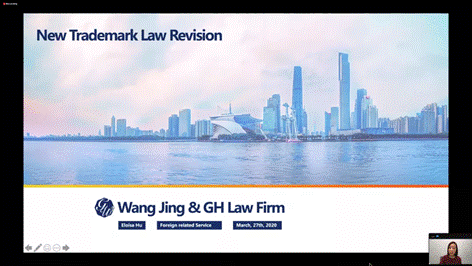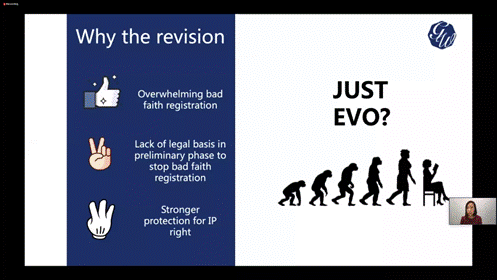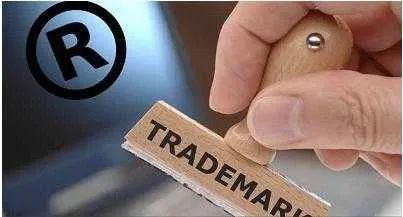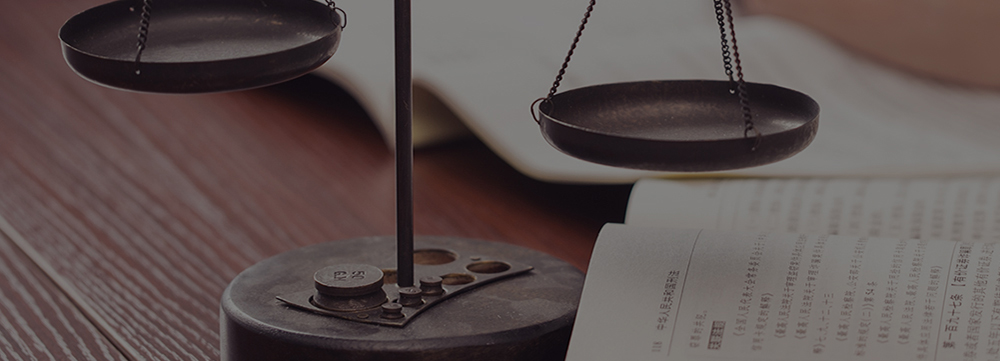Trademark Law Amendment in PRC - EU Chamber Lecture by Eloisa Hu
Original Franco Fornari, Eloísa Hu April. 2
Source: Franco Fornari, Eloísa Hu
The article is authorized by the author to be edited and published by Grand & Holders. You are welcomed to share it to your WeChat Moment. If you want to repost, please contact us and attain the author’s permission. Any repost without authorization of Grand & Holders and the author is an infringement. Contact: yuefa@yuefalaw.com
Franco Fornari
WANG JING & GH LAW FIRM
Foreign-related Legal Service
International Partner
Eloísa Hu
WANG JING & GH LAW FIRM
Foreign-related Legal Service
Associate
EU Chamber webinar
On March 27th, 2020, under the invitation of European Chamber of Commerce, lawyer Ms. Eloísa Hu from Foreign-related Legal Service of Wang Jing & GH Law Firm, spoke about the 2019 Trademark Law revision and the trademark application examination rules against bad faith registration in the webinar “Brand Protection Strategies in China”.


On April 23rd, 2019, the Standing Committee of People’s Congress approved the revision of the Trademark Law, making it the 4th revision since its promulgation. The revision entered into effect on Nov. 1st, 2019. The Revision could be considered as one of the first steps in the trademark field under the bigger scheme to strengthen the IP protection, and in line with the Opinion Regarding Reinforcement of IP Protection[1] issued by China State Council later that year on Nov. 24th.
Background of the Revision
Trademark hoarding and free-riding have always been one of the biggest challenges that the Chinese market faced and still facing. Many motions have been filed by representatives from the People’s Congress since 2008 calling for a revision to tackle these issues. The 3rd revision of Trademark Law back in 2013 provided solutions to some of these needs by adding the principles of honesty and trust, the prohibition of bad faith registration and adding punitive compensation for bad-faith violations, etc.
The 2013 revision has helped tackle trademark hoarding and free-riding, however, more effort is still needed since it has become even easier and cheaper for bad faith registration to succeed. These are the side effects of the simplification, shortened time and lowered the cost of the registration procedure that came along with the same reform.
Despite the opposition and invalidation system to combat the free-riding, the burden of economic cost and time is still heavy on the right holders; besides, the general principle of “honesty”, although frequently used and supported even in the judicial procedure against trademark hoarding, still lacks a direct, detailed and explicit legal basis for the trademark bureau to act on. It’s out of this need to “strengthen the IP Right protection scheme, to improve the business environment and tackle the main problems found in the real practice in order to suppress bad-faith registration”[2] that the 2019 Revision is made.

Details of the Revision
The changes can be divided into the following three categories:
01、Reinforcing the usage of the trademark in the stage of registration
The significant change reflecting this requirement is found in Article 4 of the Trademark Law, which is a supplementary part of the old provision that gives the trademark bureau the right to reject, during the preliminary stage of examination, the registration of trademarks that are not intended to be used. Said Article 4 with the newly supplemented part is also referred in Article 33 and Article 44 that regulate the opposition and invalidation procedure respectively. This means that “not intended to be used” is a ground for any third parties to file for opposition and invalidation against a trademark.
02、Punishment on both applicant and agents for bad faith registration and malicious trademark lawsuit and more obligation on the trademark agent
The supplemented part of Article 68 provides a legal basis for administrative punishment such as warning and fine against bad faith registration, and as well as the legal ground for punishment granted by court against malicious trademark lawsuit.
Under the scope to combat bad faith registration as set up in the above-mentioned new Article 4, Article 19 is amended subsequently, with more obligations on the trademark agents, who now shall not accept the entrustment from the client if the agent knows or should know that the trademark to be registered is not intended to be used.
03、Higher maximum amount for compensation and destruction of infringed goods upon application
The amended Article 63 stipulates that compensation for trademark infringement with malicious intention now has the maximum amount as “five times” instead of “three times” of damage suffered by the right holder/illegal income gained by the infringer. At the same time, the maximum amount for compensation granted by the court with discretion when the damage suffered/illegal income/license fee is hard to define increased from 3 million RMB to 5 million RMB in this latest Revision.
In the same article, a supplementary part is created to entitle the right holders to apply for the destruction of infringed goods, material and tools for the production of infringed goods amid trademark dispute in civil court procedure. In addition, the infringed goods cannot be put in the market after a simple deletion of infringed marks.
From the revision, we can see that the measures against bad-faith registration are implemented throughout the whole registration procedure and have been advanced to the early stage of the trademark examination conducted by the trademark bureau. At the same time, both applicant and the agent will be liable for registration of trademark not intended to be used. This way, the censorship burden de facto partly falls on the trademark professionals, which would greatly help to tackle bad-faith registration even before it’s formed. In addition, the heavier liabilities imposed and the destruction of infringed goods and their materials, tools increase the costs of the infringers, which, hopefully, can help to fight against the violation with more strength.
Determination of “trademarks not intended to be used”
If we consider the revision to provide more legal ground and measures to combat bad faith registration is the first step, then implementing the revision of trademark law in real practice is the second. Following the Revision, the National Market Supervision Administration approved Several Rules to Regulate Trademark Registration[3] on Oct. 10th, 2019, which entered into force on Dec. 1st, 2019 to provide more detailed guidelines to gauge the trademark registration, especially regarding “trademarks not intended to be used”.
Article 8 of the Several Rules specifies the following factors to be considered by trademark examiners to decide whether the registration violates the “with an intention to be used” requirement.
1. The quantity of the trademark registration done by the applicant and/or its related parties, the classes and transaction of these trademarks
2. The industry and business operation status of the applicant
3. Whether the applicant has previous bad-faith trademark registration or infringement of trademark right determined by administrative order or judicial ruling/judgement
4. Whether there are similarities between the trademark to be registered and the existing trademarks with a certain popularity
5. Whether the trademark to be registered is the same as or similar to the name of celebrities, trade names, short forms of entity names or other business marks
6. Other factors that the trademark bureau deems necessary
The above factors entitle the examiners the power to look into the business background, the previous registration history and the precedent (or the lack of) of previous trademark violation of the applicant. Hence, the examination can be more comprehensive and go beyond the previous practice of only checking whether the trademark to be registered is the same as or similar to the ones registered or preliminarily approved on the same or similar products. On the other hand, the factors to gauge “trademark intended to be used” actually include the grounds based on preemptive rights such as the right of the name of individuals and entities.
How the revision changes the trademark examination
From point 5 of Article 8 in the Several Rules we can see that the right of the name, which used to be an exclusive legal ground to the infringed parties to file for opposition and invalidation, is now available for trademark bureau examiners and in a much earlier stage. This way, the scrutiny of the bad-faith registration infringing third parties’ right of the name can be started by the examiners without waiting for interested parties to come forward on later stages. The burden on the trademark holders to defend their rights is therefore greatly reduced, considering filing for opposition or invalidation will incur costs (official fee and professional fees for agents) and take quite a long time (12 months). Compared to the fees incurred, the time it takes and the economic loss caused by the bad faith registration in the meantime is a much bigger figure.

Since the Revision has only entered into force recently, with the Chinese New Year and the Coronavirus outbreak in between, till now there are no available public resources about real cases reflecting the implementation of the Revision. At the same time, the CNIPA also expressed their need to “study and draft supplementary laws, regulations, departmental rules in order to safeguard the implementation of this Revision”[4]. Therefore, it’s still too early to judge how effective the Revision is in the fight against bad-faith registration as of now. Besides, more official statistics and real case studies are needed for better assessment of the Revision and the current trademark rights protection system in China. At Wang Jing & GH Law Firm, thanks also to our strong foreign-related practice, we handled many cases of trademark infringement in the past year and that’s why we welcome the new reform promoted by the local legislator, which we believe will give us more tools in protecting our clients’ right and interest in China.
[1] In Chinese 《关于强化知识产权保护的意见》
[2] Interpretation Regarding the Trademark Law Revision and Related Issues (《商标法修改相关问题解读》), from China National Intellectual Property Agency
[3] In Chinese 《规范商标申请注册行为若干规定》
[4] Interpretation Regarding the Trademark Law Revision and Related Issues (《商标法修改相关问题解读》), from China National Intellectual Property Agency



